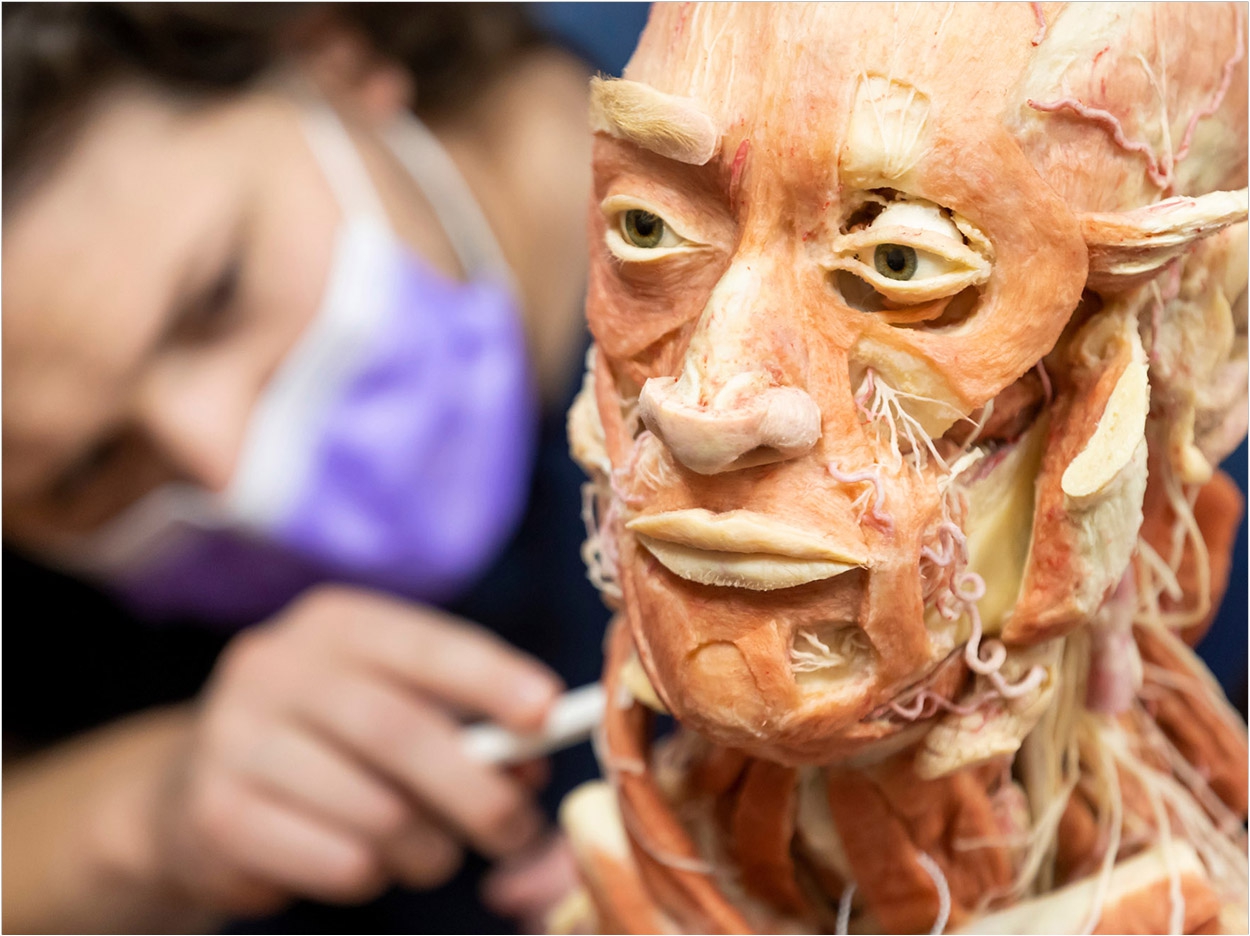
The University of Nevada Las Vegas (UNLV) School of Dental Medicine has acquired 60 plastinated human specimens for its head and neck anatomy and neuroscience course. The preserved specimens, which all came from deceased human beings, clearly present the bones, muscles, nerves, and vasculature of the head and neck.
“This course fosters an understanding of head and neck anatomy and how it relates to and affects the oral cavity,” said assistant professor Dr. Joshua Polanski.
“It’s very important that students see the variation that exists in the head and neck, so that they can understand that abnormal is not always pathological. I tell them, ‘If something goes wrong, you can’t blame the patient for not looking like the textbook.’”
UNLV is one of a handful of dental schools in the country that uses plastinated specimens in its anatomy courses. The technique preserves organic matter indefinitely by replacing water and lipids with a curable plastic. The process renders human tissue dry, nontoxic, and odorless while retaining most of the original properties of the specimen, including color and precise weight.
The school currently has 38 heads displaying multiple cross-sections, two complete body specimens, four spines, with two connected to brains, six hearts, and two forearms.
“Cadaver dissection is superior for certain clinical programs, but the plastinated specimens make for a time-saver in dental head and neck anatomy,” said assistant professor Dr. Jessica Immonen. “These specimens will last for decades.”
“After the specimens arrived last summer, Polanski did wonder about the reaction his first class would have. Like cadavers, these teaching aids once were living people.
“There was some initial hesitation among some of the first-year students. Most of it was because the plastinates were unexpected. They hadn’t arrived when the students interviewed, so we didn’t bring them up,” Polanski said.
“They got over their reluctance pretty quickly, especially once they saw the jealousy among the other cohorts and heard those students talk about how helpful they felt the plastinates would have been,” Polanski said.
The specimens have proven to give students crucial insights that aren’t readily available from less hands-on materials, the school said.
“Real human specimens are so much more effective for learning anatomy and human-to-human variation than atlases, and the plastinated specimens remove the two negative aspects of cadavers: their fragile nature and unpleasant smell,” said Bingham Clawson, a member of the Class of 2024.
“The plastinated specimens maintain fresh colors that are often lost as bodies age over time even with preservation procedures. They make identifying and distinguishing between the ever confusing structures of nerves, arteries, and veins so much easier,” Clawson said.
Related Articles
UNLV Students Build Models Instead of Dissecting Cadavers to Learn Anatomy
Tufts Dental Students Launch Oral Health Program for Lebanese Children
Researcher Spotlights Oral-Systemic Connections at AAAS Meeting


